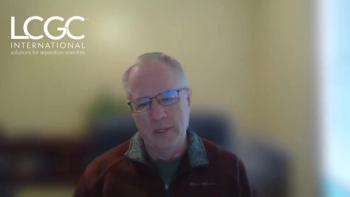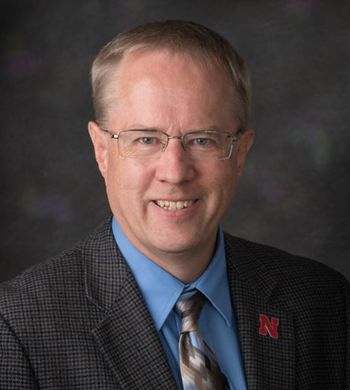
- The Column-07-16-2018
- Volume 14
- Issue 7
Direct Liquid Chromatography Tandem Mass Spectrometry Analysis of Glyphosate, AMPA, Glufosinate, and MPPA in Water Without Derivatization
This article describes a direct analysis of glyphosate, aminomethylphosphonic acid (AMPA), glufosinate, and 3-methylphosphinicopropionic acid (MPPA) in water by liquid chromatography coupled to tandem mass spectrometry (LC–MS/MS) without derivatization. The chromatographic separation was performed using a hydrophilic interaction liquid chromatography (HILIC) column and typical LC–MS mobile phases. Method performance was evaluated, showing excellent results. The low limits of quantification (LLOQs) obtained meet the requirements of EU guidelines and could also be used to get an agreement in France where regulations require lower LLOQs (NOR: DEVL1703763V).
This article describes a direct analysis of glyphosate, aminomethylphosphonic acid (AMPA), glufosinate, and 3-methylphosphinicopropionic acid (MPPA) in water by liquid chromatography coupled to tandem mass spectrometry (LC–MS/MS) without derivatization. The chromatographic separation was performed using a hydrophilic interaction liquid chromatography (HILIC) column and typical LC–MS mobile phases. Method performance was evaluated, showing excellent results. The low limits of quantification (LLOQs) obtained meet the requirements of EU guidelines and could also be used to get an agreement in France where regulations require lower LLOQs (NOR: DEVL1703763V).
Glyphosate and glufosinate are two broad-spectrum systemic herbicides, aminomethylphosphonic acid (AMPA) and 3-methylphosphinicopropionic acid (MPPA), their two major metabolites, respectively. Glufosinate, also known as phosphinothricin, is a naturally occurring broad-spectrum systemic herbicide produced by several species of Streptomyces soil bacteria. Glyphosate is the most frequently used herbicide globally and in the EU.
Glyphosate and glufosinate are in much discussion in Europe, particularly regarding their use in farming. Glufosinate, registered for use as an herbicide in Europe, has been withdrawn from the French market since 2017 by ANSES (French Agency for Food, Environmental and Occupational Health & Safety) because of its classification as a possible reprotoxic chemical (R1b).
As a result of the wide use of these herbicides and increasingly restrictive regulations, very sensitive methods for their determination are required.
In March 2015, Japan’s Ministry of Health, Labour and Welfare, Health Service Bureau, Water Supply Division issued a notification (No. 0325 Item 3–6) specifying the use of liquid chromatography coupled to tandem mass spectrometry (LC–MS/MS) for water quality control inspections of glufosinate, but without specifying the method.
Meanwhile in Europe, guidelines were established. For example, the low limits of quantification (LLOQ) needed for glyphosate and AMPA in water was set at 0.1 ppb (ng/mL), and even lower (0.03 ppb) in France for conformity to get an agreement.
Reaching such low LLOQs is very challenging because of the ionic character, low volatility, low mass, and high polarity of these substances. Derivatization quickly became a standard for their determination (1), but the derivatization process is exhaustive and time-consuming. This article describes a direct analysis of these pesticides in water.
Methods
Quantitative analysis of glyphosate, AMPA, glufosinate, and MPPA was performed with commercially available mineral water. Sample pretreatment consisted of a 0.2 µm filtration directly into LCMS filter vials (Thomson Instrument Company). Chromatographic separation was performed using a 2.0 × 150 mm, 5-µm HILIC column (Shodex) heated at 40 °C and typical LC–MS mobile phases (water, acetonitrile, formic acid) in a 20âmin gradient run. Samples were monitored using a high sensitivity UHPLC–MS/MS system (Nexera X2 and LCMS-8060, Shimadzu Corporation). MRM transitions were optimized using LabSolutions software (Shimadzu Corporation). For glyphosate analyzed in negative mode, the first transition (168>63) followed by (168>79) were used. For AMPA, also analyzed in negative mode, MRM (110>79) and (110>63) were selected. Glufosinate was ran in positive mode with the transitions (182>56) and (182>136). Finally, MPPA was analyzed in negative mode with MRM (151>63) and (151>78).
Regarding the tandem mass spectrometry detector, the following parameters were used. The LC–MS system ran with a heated electrospray ionization (ESI) at 350 °C. The nebulizing gas was set at 3 L/min, the heating gas at 15 L/min, and the drying gas at 5 L/min. With a pause time of 3 msec and a polarity switching time of 5 msec, a minimum of 30 points for each peak was reached. See reference 2 for more details on that method.
The four analytes were quantified simultaneously in less than 12.5 min. Figure 1 shows a typical MRM chromatogram of the analytes.
Results
The developed method enabled the quantification of glyphosate, glufosinate, and their metabolites AMPA and MPPA in mineral water without derivatization. The calibration range was 0.03–10 ppb for glyphosate (Figure 2[a]) and AMPA (Figure 2[b]), 0.02–10 ppb for glufosinate (Figure 2[c]), and 0.05–10 ppb for MPPA (Figure 2[d]). For all analytes, the r² values of the calibration models were above 0.995, with signal-to-noise ratios (S/N) above 10 for all LLOQ levels. Accuracies are detailed in Table 1.
LLOQs in water were 0.03 ppb (ng/mL) for glyphosate (Figure 3[a]) and AMPA (Figure 3[b]), 0.02 ppb for glufosinate (Figure 3[c]) and 0.05 ppb for MPPA (Figure 3[d]). Signal-to-noise ratio (S/N) was above 10 for all LLOQ levels (ASTM, 4 blocks of 0.25 min).
Analytical performance of the method was monitored using calibrators in LCMS water and QCs in mineral water at several levels.
Accuracies of calibrators (Table 1) and QC samples (Table 2) were between 85% and 115% for all analytes, and relative standard deviation (RSD) values (n = 5 intra-day, over 3 days for inter-day) at 0.1 ppb in mineral water were below 10% (Table 2). To conclude, this method enables the quantification of the pesticides of interest without derivatization. The LLOQs obtained meet the requirements of the EU and French guidelines.
Conclusion
Using ultrafast tandem mass spectrometry technology and hydrophilic interaction liquid chromatography (HILIC) separation conditions, this method enables the 0.03 ppb LLOQs required in France-which has currently the most stringent regulations-to be reached. This method allows routine laboratory testing of water quality to fulfill not only the EU guidelines, but also worldwide regulations regarding drinking water. In addition, by eliminating the derivatization step, this method reduces maintenance on the LC–MS
system and make the analysis faster and simpler.
References
- Shimadzu application note C120: Analysis of Glufosinate, Glyphosate and AMPA in Drinking Water Using a Triple Quadrupole LC/MS/MS System
- A. Jaffuel and A. Huteau, “Novel Method for the Sensitive Quantification of Glyphosate, AMPA, Glufosinate and MPPA in Water Without Derivatization,” poster presented at the 66th ASMS Conference on Mass Spectrometry, San Diego, California, USA, 2018.
Aurore Jaffuel obtained her diploma of engineer in chemistry in 2010 in Lyon, France, at CPE Lyon Engineering School, followed by a Ph.D. in analytical sciences, working at the Institute of Analytical Sciences (ISA) within the University of Lyon. She built her professional experience as an analytical scientist both in public laboratories and large pharmaceutical industries, before she joined Shimadzu France in 2014. Since then, she has worked as an application specialist for the LC–MS range.
Alban Huteau obtained his diploma in analytical chemistry with a specialization in HPLC columns in 2003 from the University of Orsay in France. He then started his professional career in the laboratory column distribution and equipment in ionic chromatography before he joined the Shimadzu France subsidiary in 2009. Since then, he has been products specialist for LC products. In August 2016, he was promoted to manager for the applicative team within Shimadzu France.
Stéphane Moreau obtained his diploma in 1994 at INSA (National Institute of Applied Sciences) Lyon, France, in fine chemistry and engineering with a specialization in chemical process engineering. He then started his professional career in laboratory equipment distribution before he joined the Shimadzu France subsidiary in 2002. Since then, he has held various positions to develop the MS range. He has been product manager for the MS range with Shimadzu Europe since September 2013.
E-mail:
Articles in this issue
over 7 years ago
Do Chromatographers Need More Automation?over 7 years ago
Generic GC–FID for Volatile Amine Quantitation in Pharmaover 7 years ago
Agilent Announces ProZyme Acquisitionover 7 years ago
Hamilton Announces European Relocationover 7 years ago
The Chromatographic Society: “Grass Roots 3” Educational Eventover 7 years ago
Vol 14 No 7 The Column July 2018 North American PDFNewsletter
Join the global community of analytical scientists who trust LCGC for insights on the latest techniques, trends, and expert solutions in chromatography.




